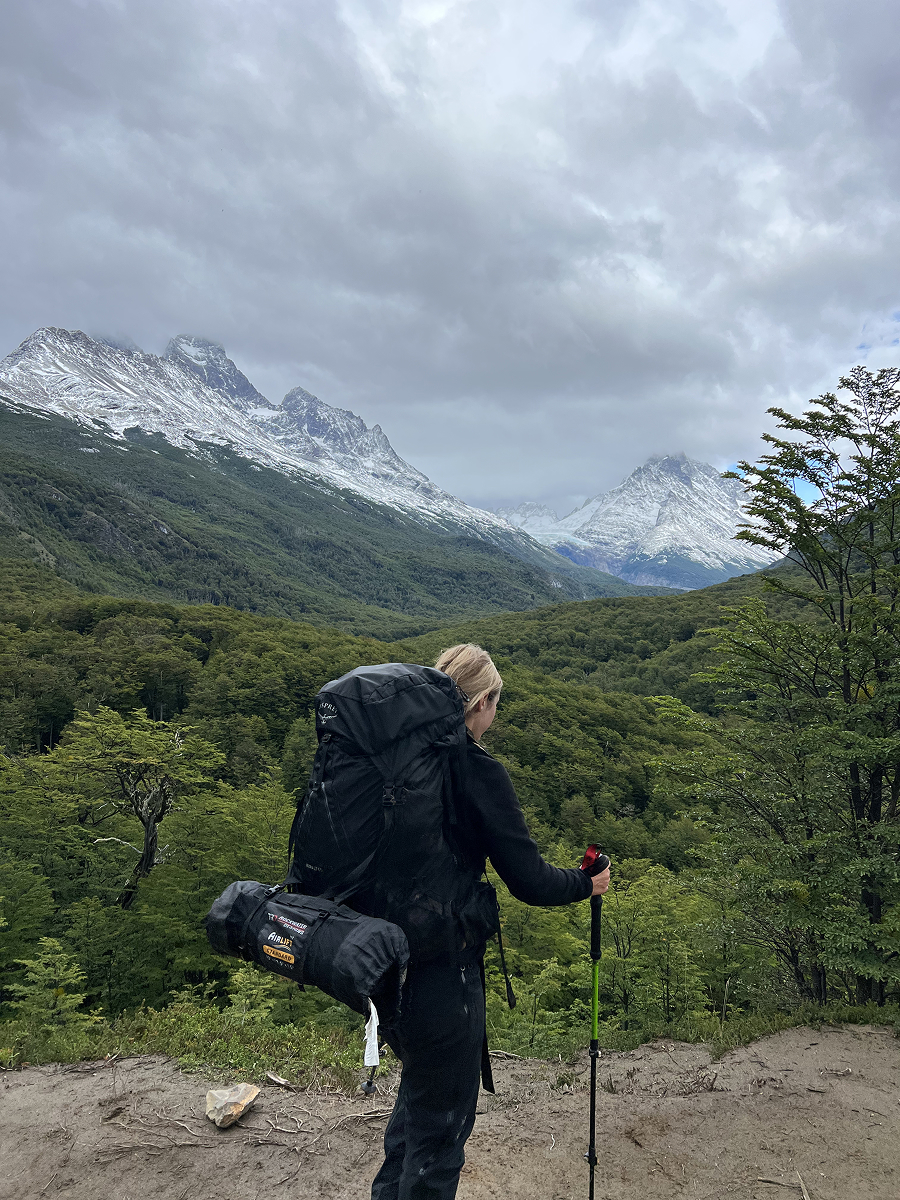Patagonia always felt like this surreal, remote place — somewhere near the end of the world. A land vast wilderness: dramatic peaks, howling winds, and trails that carve through some of the most unforgettable terrain I’ve ever seen. So when I finally had the chance to go, I knew I wanted to do the full Patagonia O Trek — not the more popular W Trek.
Why? I craved the challenge. I enjoy long treks, and I wanted to see the quieter, wilder side of Torres del Paine. The O Trek offers that: a loop that takes you through glacier valleys, alpine passes, forests, and lake-filled basins. It’s about 130 kilometers, and takes 7–9 days depending on your pace.
I hiked it self-guided and self-supported in mid-March — carrying all my own gear, food, and tent. It was the best decision I could’ve made.
What Makes the O Trek Different from the W Trek?
The W Trek covers the scenic highlights — the Torres viewpoint, the French Valley, Grey Glacier — in a shorter, more accessible way. But the O Trek goes deeper. It includes the W section, but adds a full loop around the northern side of the park: less crowded, more remote, more rewarding.
What I loved most was the contrast. The first few days were quiet — we’d see the same group of 20 or so trekkers at every camp. The vibe was calm, friendly, communal. Once we merged with the W section, the trail felt almost busy in comparison. Both parts are stunning, but they offer different kinds of experiences.
We didn’t get to see Las Torres. On the last day, when we got midway through the trail, we found out the rest was closed due to a snowstorm. We waited for a few hours at Chileno (the nearby camp) and had hot chocolate, hoping it would reopen — but it didn’t. Some people had enough time in their itinerary to try again the next day, but we had a flight to catch.
We also didn’t see the French or British lookouts. That day it was downpouring so hard with zero visibility that we decided it wasn’t worth the detour just to see fog.
What It’s Really Like to Hike the Patagonia O Trek
Every day looked different. One morning we crossed a high alpine pass in the snow. The next, we wandered through forests and crossed swing bridges. Sometimes we woke up to the sound of rain hammering the tent, other times to mist clinging to the trees. And through it all: Patagonia’s raw, surreal beauty.
Despite the 8-day duration, I didn’t find the trek difficult. I’m used to multi-day hikes, and this one was quite accessible — the trails were well-marked, the elevation gain manageable, and the campsites reasonably spaced. With a bit of fitness and preparation, it’s very doable.
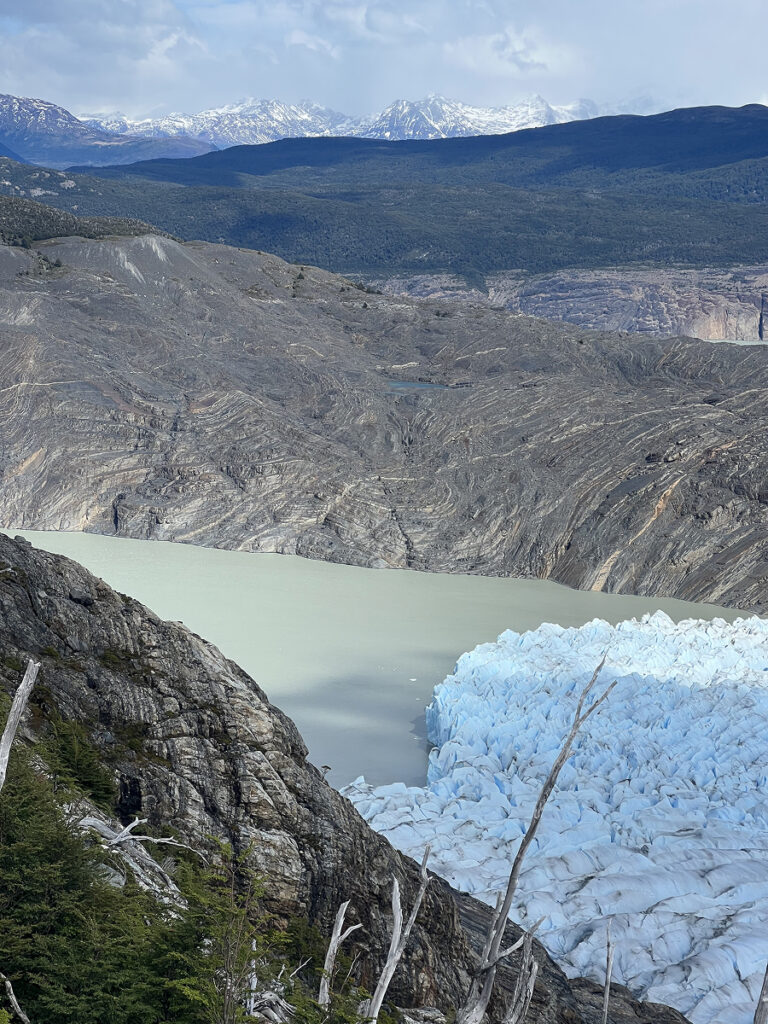
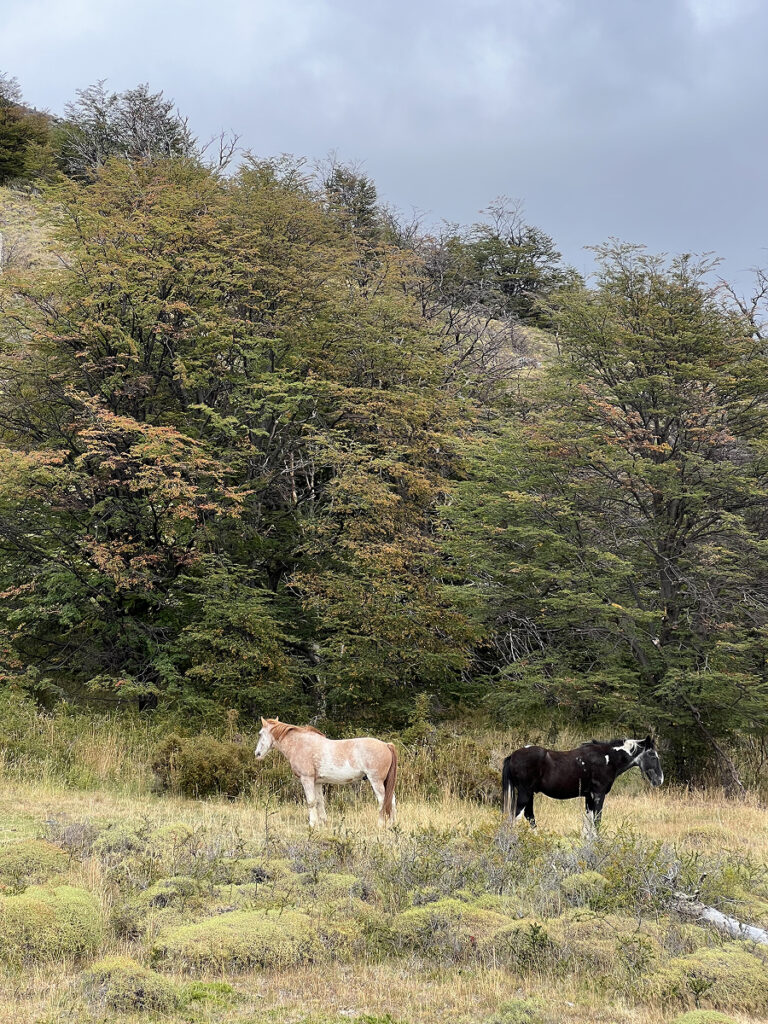
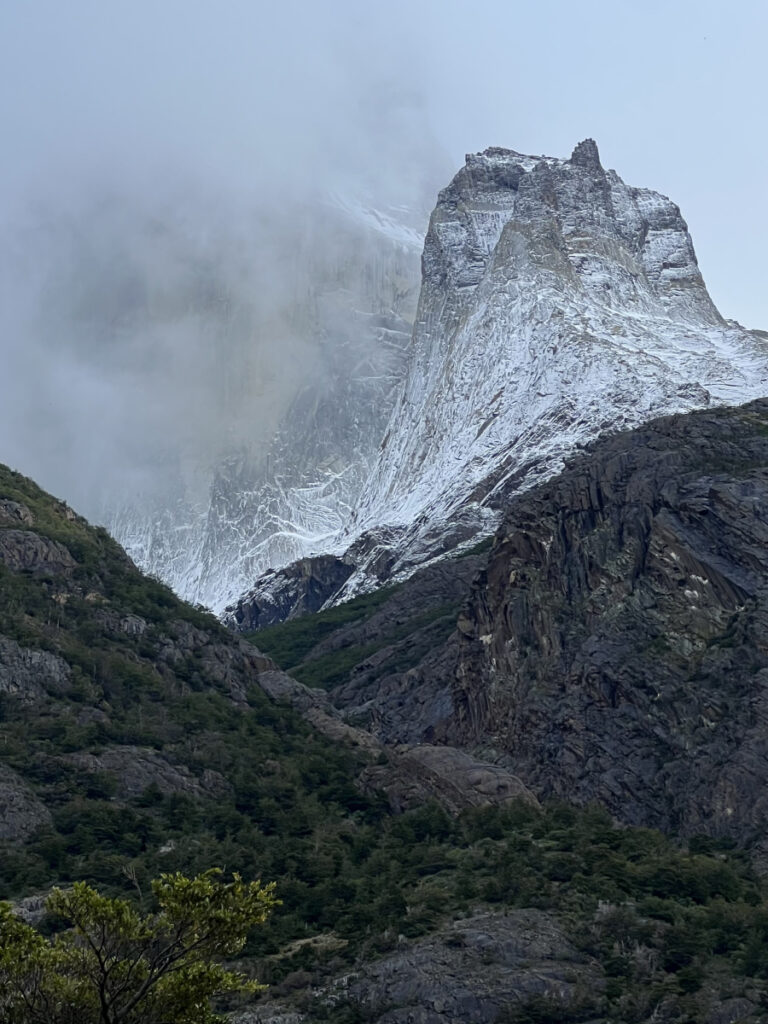
Self-Guided and Self-Supported: What That Means
We carried our own tent, sleeping bags, stove, and food for 8 days. This gave us more flexibility — and saved money. But it also meant heavy backpacks and a lot of planning.
We rented most of our gear from our hostel in Puerto Natales, Hostal Bellavista Patagonia, which made it easy. We also picked up fuel and a few dehydrated meals from Rental Natales. Our food plan? Tuna cans, oatmeal, pasta, salmon, chocolate, ramen, hot chocolate, coffee, and dried sausage.
(And yes, we ran out of chocolate by Day 2. Tragic. We bought cookies from a refugio to survive.)
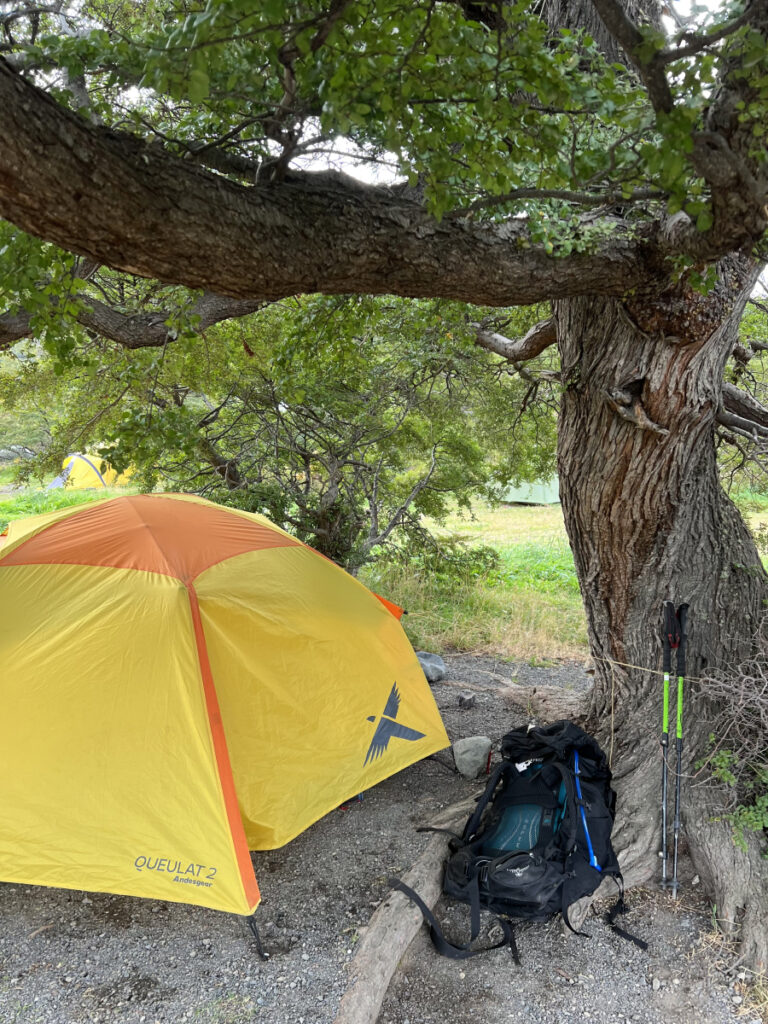
What Month Should You Go?
We did the trek in March and it was near-perfect. Autumn colors had started to appear, the crowds were thinning, and we got a mix of moody skies and a few golden afternoons. That said — it rained almost every day. Bring real rain gear.
What to Pack for the O Trek
You need to pack light, but smart. The most important rule: stay dry and warm. There’s no drying hut in the middle of a rainy forest.
Essentials:
- Waterproof hiking boots (non-negotiable)
- Full shell layer (jacket + pants you can pull over leggings)
- Warm layers: fleece, thermal base, packable down jacket
- Hat, gloves, multiple socks
- Sleeping bag (warmth-rated), tent, mattress
- Lightweight stove, pot, spork, fuel
- Water bladder, headlamp, power bank
- Moisturizer, sunscreen, first aid, lip balm
You don’t need extra outfits. You’ll be wearing the same thing every day. It’s fine.
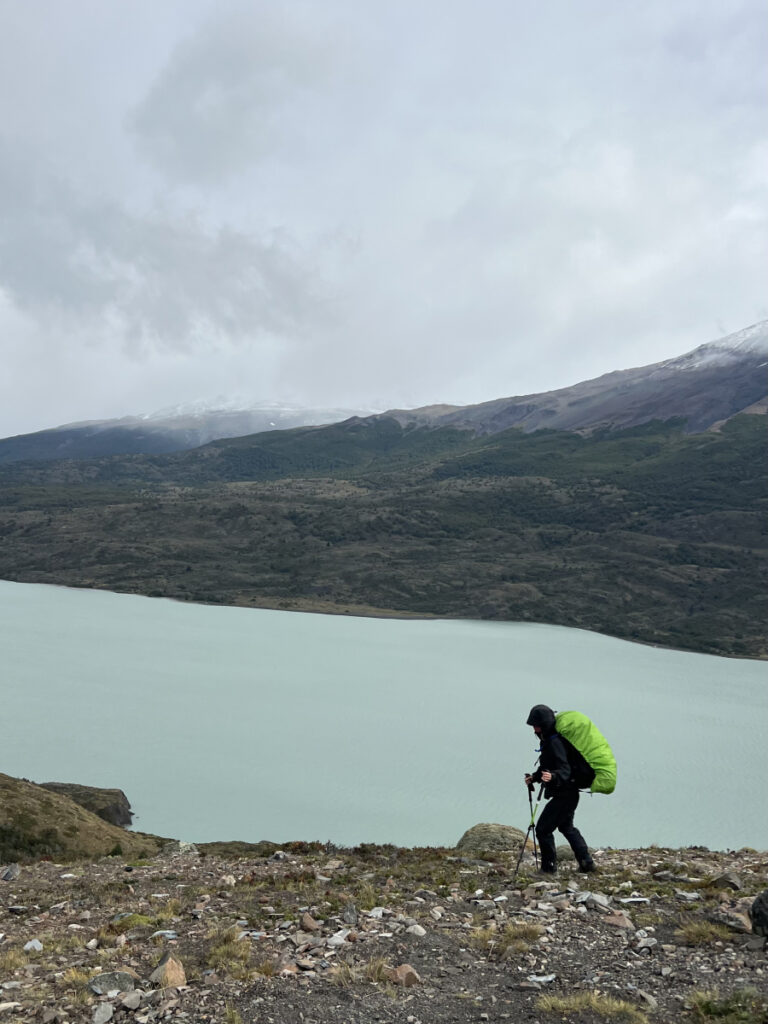
Logistics: How We Started the Trek
We stayed a few nights in Puerto Natales at Hostal Bellavista Patagonia, which had private rooms, gear rental, and helpful owners. On the morning of the trek, we had breakfast at 5:30am, then walked to the bus terminal to catch our transfer to Torres del Paine.
At the park entrance, we transferred to a minibus that took us to the trailhead. And just like that — we were walking.
Final Thoughts on the O Circuit
Hiking the Patagonia O Trek was one of the most rewarding experiences I’ve had outdoors. Every day brought something new. Every view left an impression. Every campsite felt earned.
If you’re torn between the O and the W, ask yourself what kind of experience you want. If you crave solitude, variety, and a sense of journey — go for the full circuit.

